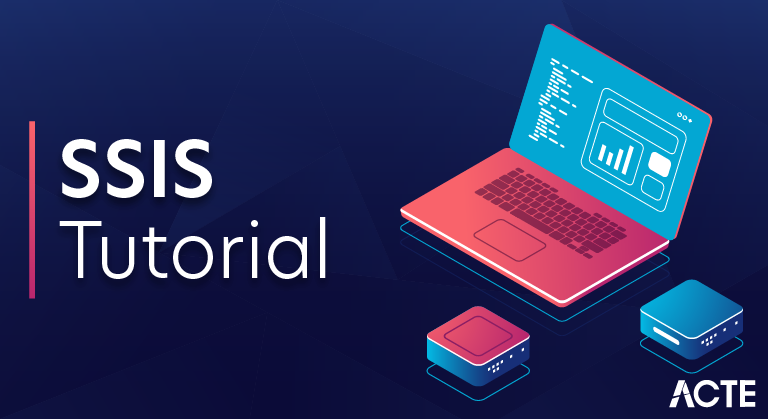Introduction to SSIS 816
Are you looking to streamline your data integration process and enhance the efficiency of your business operations? If so, SSIS 816 might just be the solution you’ve been searching for. In this blog post, we’ll dive into what SSIS 816 has to offer, explore its key features, weigh the pros and cons of using it, discuss the best alternatives available in the market, and provide real-life examples of companies benefiting from these tools. So buckle up as we navigate through the world of data integration tools and help you make an informed decision for your business!
Key Features of SSIS 816
Looking at the key features of SSIS 816, it’s clear that this data integration tool offers robust capabilities for businesses looking to streamline their processes. One standout feature is its intuitive drag-and-drop interface, making it easy for users to create and manage data workflows without extensive coding knowledge.
Another notable aspect of SSIS 816 is its ability to handle complex data transformations with ease. From simple tasks like data cleansing to more advanced operations like merging datasets, this tool provides a wide range of functionalities to meet various business needs.
Moreover, SSIS 816 offers seamless connectivity with a variety of databases and applications, allowing for efficient data exchange across different systems. This ensures that organizations can easily integrate disparate sources of information into a unified platform for analysis and decision-making purposes.
In addition, the tool also provides comprehensive monitoring and logging capabilities, enabling users to track the status of their data pipelines in real-time and troubleshoot any issues that may arise quickly. These key features make ssis-816 a valuable asset for businesses looking to optimize their data integration processes.
Pros and Cons of using SSIS 816
SSIS 816 offers a variety of advantages that make it a popular choice for data integration. One of the main pros is its user-friendly interface, making it easy for users to design and manage ETL processes efficiently. Additionally, It provides robust connectivity options, allowing seamless integration with various data sources.
On the flip side, one potential drawback of using SSIS 816 is its learning curve. Users without prior experience may find it challenging to grasp all the functionalities quickly. Moreover, some users have reported performance issues when dealing with large datasets or complex transformations in ssis-816.
Despite these drawbacks, many businesses still choose SSIS 816 for its reliability and scalability. It’s essential to weigh the pros and cons carefully before deciding if SSIS 816 aligns with your organization’s specific needs and requirements.
Best Alternatives to SSIS 816
If you’re exploring alternatives to SSIS 816, there are several robust options available in the market. One popular choice is Talend Open Studio, known for its user-friendly interface and powerful data integration capabilities. Another solid alternative is Informatica PowerCenter, offering a wide range of features for ETL processes and data quality management.
For those looking for an open-source solution, Apache Nifi is a top contender with its visual flow-based programming model. Additionally, IBM InfoSphere DataStage stands out for its scalability and enterprise-level data integration capabilities.
Each alternative has its strengths and weaknesses, so it’s essential to evaluate your specific business needs before making a decision. By considering factors like cost, scalability, ease of use, and compatibility with your existing systems, you can choose the best option that aligns with your data integration requirements.
How to Choose the Right Data Integration Tool for Your Business
When it comes to choosing the right data integration tool for your business, there are several factors to consider. First and foremost, assess your specific business needs and objectives. Understanding what you aim to achieve with the tool will guide you in selecting the most suitable option.
Next, evaluate the scalability of the data integration tool. Ensure that it can grow alongside your business as its needs evolve over time. Compatibility with existing systems is also crucial. The chosen tool should seamlessly integrate with your current infrastructure without causing disruptions.
Consider ease of use and user-friendliness as well. A user-friendly interface will enable your team to quickly adapt to the new tool and maximize its potential without extensive training requirements. Additionally, look into customer support options provided by the tool’s vendor to ensure timely assistance whenever needed.
Don’t forget about cost-effectiveness. While budget is a significant factor, prioritize value over price alone when selecting a data integration tool for long-term success in achieving your business goals.
Real-Life Examples of Companies Using SSIS 816 or its Alternatives
Real-Life Examples of Companies Using SSIS 816 or its Alternatives:
Company A, a leading e-commerce giant, utilizes ssis-816 jav to streamline their data integration processes. By efficiently transferring data between various systems, they have improved operational efficiency and decision-making.
On the other hand, Company B prefers an alternative tool like Talend Open Studio for Data Integration. This choice has allowed them to achieve seamless connectivity between different databases and applications, enhancing their overall data quality and accuracy.
In the financial sector, Company C relies on Informatica PowerCenter as their preferred data integration solution. With its robust features and capabilities, they can handle large volumes of financial data securely and efficiently.
Each company’s unique requirements drive their choice of using SSIS 816 or opting for alternative tools like Alteryx or Apache Nifi. These real-life examples highlight the diverse ways in which businesses leverage different data integration solutions to meet their specific needs.
Conclusion: Is SSIS 816 the Right Choice for Your Business?
When deciding if SSIS 816 is the right choice for your business, it ultimately comes down to your specific data integration needs. The key features and functionalities of ssis-816 make it a strong contender in the data integration space, especially for those already invested in Microsoft technologies.
However, it’s essential to evaluate other alternatives as well to ensure you are choosing the best fit for your organization. Consider factors such as ease of use, scalability, cost-effectiveness, and compatibility with your existing systems when making a decision.
Remember that there isn’t a one-size-fits-all solution when it comes to data integration tools. Each business has unique requirements that may be better addressed by different tools or platforms. Take the time to research and test out different options before settling on the right tool for your business.
In conclusion: Make an informed decision based on thorough analysis of your needs and available options to choose the data integration tool that will help drive success for your business in the long run.



